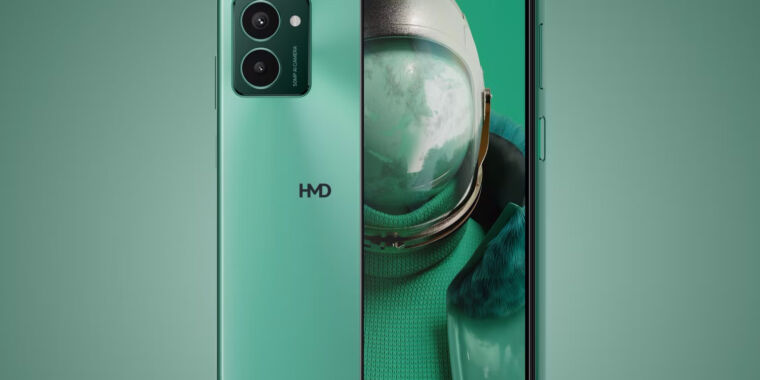HMD’s Expansion into the Mobile Phone Market
HMD, previously known for manufacturing Nokia-branded phones, is now venturing into the market with its own brand, starting with the “HMD Pulse” line. These low-end phones are set to hit the European market, with a US release of the HMD Vibe scheduled for May.
European Release
The European market will receive three models: the HMD Pulse priced at 140 euros, Pulse+ at 160 euros, and Pulse Pro at 180 euros. Converting these prices to USD, they roughly range from $150 to $190. Despite the minimal price difference between models, all three are equipped with Unisoc T606 SoCs, featuring a 12 nm chip with two Cortex A75 Arm cores, two A55 cores, an ARM Mali-G57 MP1, and operating on 4G connectivity.
Additionally, all models sport a 90 Hz, 6.65-inch, 1612×720 LCD display, 128GB storage, and a 5,000 mAh battery. The base model offers 4GB of RAM, a 13 MP main rear camera, an 8 MP front camera, and 10 W wired charging. The Plus version upgrades to a 50 MP main camera, while the Pro model boasts 6GB of RAM, a 50 MP main and front camera, and 20 W wired charging. Notably, all models feature a 2 MP “depth sensor” as a secondary lens camera.
Interestingly, the Pro model presents bulkier bezels and a bottom chin compared to the base and Plus models. Despite this difference, the overall design of the phones maintains a sleek appearance, maintaining HMD’s reputation for offering aesthetically pleasing devices at affordable price points. The Pulse line is being marketed as “built to be repairable,” ensuring that parts will be available for replacement, a unique feature that sets these phones apart within their price range.
US Release: HMD Vibe
The US-bound HMD Vibe, closely related to the European Pulse line, offers a more advanced user experience with a Snapdragon 680 processor. Despite being an older Qualcomm chip from 2021, the Snapdragon 680 features a 6 nm chip with four Cortex A73 and A53 cores, 6GB of RAM, and a 4,000 mAh battery, priced at $150.
Camera specifications on the Vibe are modest, featuring a 13 MP main shooter and a 5 MP front camera. All devices include NFC, a 3.5 mm headphone jack, a Micro SD slot, USB-C ports, and come preloaded with Android 14 with two OS upgrades. Notably, the US variant lacks a fingerprint reader, a feature present in the European models.
HMD’s Transition Away from Nokia Brand
HMD’s decision to move away from the Nokia brand signifies a strategic shift in positioning within the mobile phone market. While many defunct phone companies have licensed their brands, creating “zombie brands,” HMD’s approach stands out as a direct successor to Nokia rather than a mere licensee. The company’s Finnish roots and leadership team, comprising former Nokia executives, solidify this relationship.
Notably, Nokia retains a 10 percent ownership stake in HMD, while Foxconn’s division, FIH Mobile, holds a 14 percent share. Despite these close ties, HMD is forging its path by establishing a multi-brand strategy, ensuring the continuity of Nokia phones while expanding its own line. Collaborations with other brands, such as the recent launch of the “Heineken” dumbphone and the upcoming release of a “Barbie flip phone” in collaboration with Mattel, demonstrate HMD’s commitment to diversifying its product portfolio and brand partnerships.
Image/Photo credit: source url





